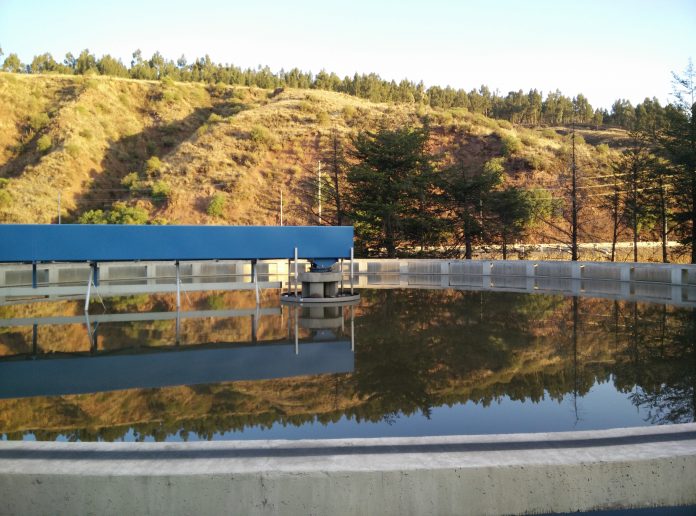How utilities can recover and reuse potent greenhouse gases from across the wastewater sector. By James Workman
When we talk of “emissions” we tend to think of carbon dioxide, factory smokestacks and vehicle exhaust pipes but rarely do we think of water.
But with the clock ticking and temperatures rising, wastewater utilities from Jordan and Mexico to Peru and Thailand are now increasingly motivated to go after their own emissions given that methane is a staggeringly potent greenhouse gas.
You can’t see it, smell it, or taste it and it doesn’t last long in the atmosphere. But in a twenty-year span, methane has proven 85 times more successful at trapping heat than carbon dioxide. In fact, scientists now estimate that methane causes a quarter of all global warming.
The good news is that, since these volatile methane emissions are usually man-made and related to water, we can judiciously hunt them down to unmake them, and earn credits while doing so.
“Actions to reduce methane emissions will have an impact in this generation,” says Ricardo Cepeda-Marquez of C40, a network of megacities tackling climate change. “Aggressive mitigation of methane across all sectors can reduce global warming over the next 50 years by as much as 0.5 ̊C, with most reductions delivered by 2040.”

Companies for Climate Mitigation
Most climate activists blame methane emissions on fossil fuels. Rightly so. The oil and gas industry does generate 1.6 billion metric tonnes of CO2 equivalent. Yet it turns out water professionals must hold themselves responsible for an equal amount of methane pollution.
While spread out and hard to detect, “the problem is quite big,” warns Astrid Michels, Project Manager of the IWA-GIZ Water and Wastewater Companies for Climate Mitigation (WaCCliM) effort. “The contribution of the water sector to greenhouse gas emissions is complex and therefore often under-recognised.”
Nevertheless, the sector’s emissions add up. In 2010, wastewater accounted for approximately 7 percent of all global methane emissions but if combined with emissions from landfills–where Cepeda-Marquez notes much of the 80 percent of untreated sewage gets dumped–“the wastewater sector represents 20 percent of the overall anthropogenic sources of methane, the same as those from the oil and gas industry.”
The flip side is that, by looking in the mirror and deciding to go after methane emissions, water professionals can single-handedly reduce a fifth of what causes 25 percent of all global warming.
Easier said than done? Not necessarily. According to Cepeda-Marquez, the wastewater sector can reduce half a billion metric tonnes of CO2 equivalent just by installing anaerobic sludge digestion, covering and capturing biogas at existing open air anaerobic lagoons, and retrofitting combustion systems to f lare or utilise methane for onsite electricity or thermal uses.

But it helps to start small, and move in stages. Admitting and identifying that wastewater has a methane problem is halfway towards winning the battle. WaCCliM targets improving operational efficiency. By doing so, says Michels, “utilities from Jordan, Mexico, Peru and Thailand demonstrate how in the short-term they reduce energy consumption by up to 40 percent.”
Next, systems need to be upgraded to become carbon-neutral, or better. “[We need to] explore natural synergic opportunities,” says Cepeda-Marquez, since “food waste co-digestion in wastewater treatment facilities, and energy generation from methane, both have the potential to make the solid waste and wastewater treatment sector a net carbon sink.”
Stringent regulations help, say WaCCliM stakeholders. But a policy framework should harness incentives to focus on benefits like water access, air quality, public health and urban design. Conversely, nationally imposed energy mandates can hinder local governments and cities from seeking finance to invest in more ambitious climate and water actions.
The best strategies unite sectors and scales. Targeting methane may help do exactly that. Carbon accounting can often lead to finger-pointing among rival interests. Water professionals have been struggling to differentiate wastewater from the rest of the waste streams, in order to make utilities realise their distinct contributions to reducing emissions, explains Corinne Trommsdorff of IWA. “But actually, from a full city perspective, it makes most sense to keep these emissions combined in order to trigger an integrated waste and wastewater management approach,” says Trommsdorff.
Going further, Michels hopes methane can advance a ‘circular economy’ approach that closes the water, carbon, nitrogen and phosphorus loops. Efforts to reduce methane emissions help recover energy from wastewater, recover phosphates and nitrogen, and reuse the treated wastewater for irrigation.
Ambitious? Absolutely. But the Paris targets give water professionals strong new incentives to mitigate the sector’s large methane footprint across its waste streams. Once they learn to measure the emissions from this silent invisible gas, cities can judiciously take steps to shrink it.









